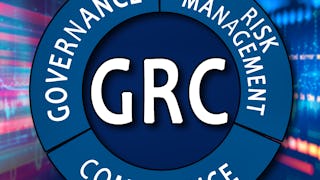Cyber Security: GRC Part 2: Risk Management and Compliance | Govern, Guide, and Respond with Confidence
In a world where digital threats are a boardroom issue, leadership in cybersecurity requires more than technical literacy—it demands strategic foresight, decisive governance, and resilient execution. This course is your executive playbook for navigating the complexities of modern cyber security management. Lead the Cyber Defence from the Front Developed by the Cyber Skills Academy at Macquarie University—ranked in the top 1% of universities globally and recognised as Australia’s leading cyber security school—this course has been co-designed with industry to empower senior professionals, managers, and rising cyber leaders with the frameworks, insights, and tools to lead with confidence in a dynamic threat environment. You’ll explore how to: • Craft and align a cybersecurity strategy to business goals, integrating frameworks like NIST, CIS, and ISO27001. • Establish effective cyber governance models including risk management structures and the Three Lines of Defence. • Assess and quantify organisational cyber risks using both qualitative and quantitative methodologies. • Make high-stakes decisions under pressure during real-time cyber incidents, leveraging playbooks, threat models, and resilience protocols. • Build a culture of trust, accountability, and proactive risk reduction across the enterprise. From Boardroom to Breach Response Whether you're guiding security policy, reporting to the board, or leading operational teams, this course provides the essential skills to bridge the gap between executive leadership and cyber security excellence. Build your capability as a trusted cyber leader. Lead with clarity. Respond with control. Govern with purpose.

















